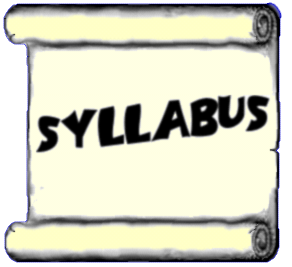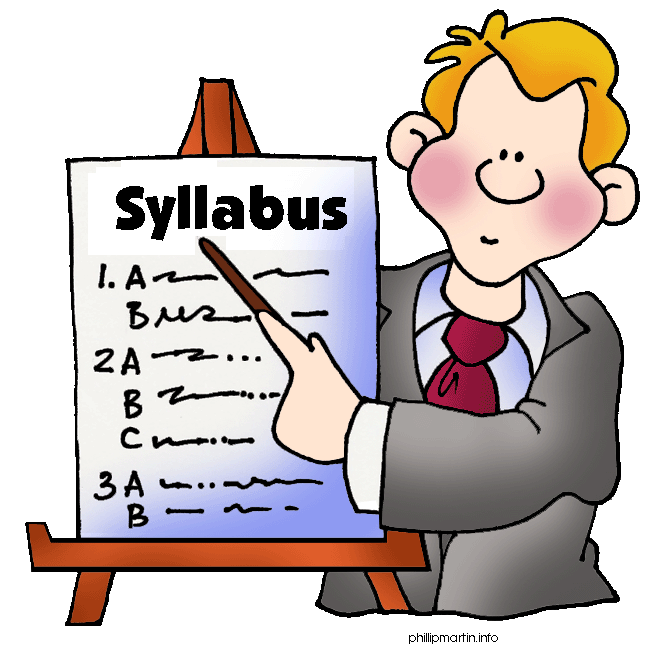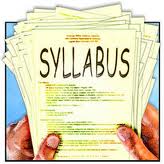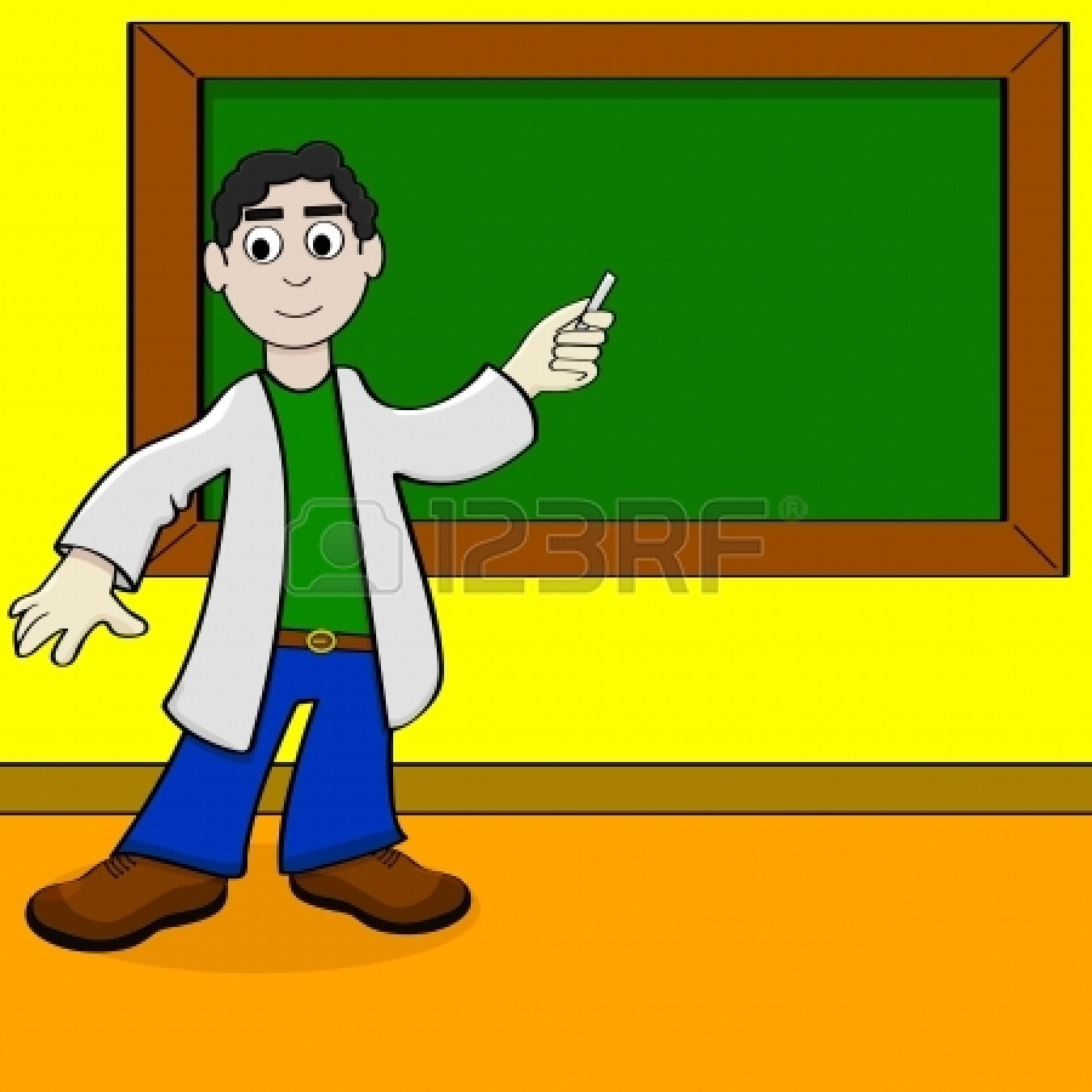 Writing or scripting a syllabus presents some challenges. On the one hand, as the first communication with the students, the syllabus needs to convey the excitement and interest of the course, and give the students a sense of how this course will transform them and why they might want to take it. On the other hand is poses great threat if it is not covered in experiential manner in the higher education.
Writing or scripting a syllabus presents some challenges. On the one hand, as the first communication with the students, the syllabus needs to convey the excitement and interest of the course, and give the students a sense of how this course will transform them and why they might want to take it. On the other hand is poses great threat if it is not covered in experiential manner in the higher education.
The syllabus plays a vital role in both learning and teaching. It ensures a fair and impartial understanding between the instructor and students; it also defines policies relating to the course. Policies such as what students would be learning in a course, code of conduct, assessment parameters, books to be referred, pedagogy etc. In short, it provides a roadmap of course.
 Both syllabus and curriculum are often confused. While, curriculum is a focus of study, consisting of various courses all designed to reach a particular proficiency or qualification, a syllabus usually contains specific information about the course. It’s an outline and summary of topics to be covered in a training course. It is descriptive often either set out by an exam board.
Both syllabus and curriculum are often confused. While, curriculum is a focus of study, consisting of various courses all designed to reach a particular proficiency or qualification, a syllabus usually contains specific information about the course. It’s an outline and summary of topics to be covered in a training course. It is descriptive often either set out by an exam board.
Human life, however varied, consists in the performance of specific activities. Education is supposed to prepare us for life. It is suppose to prepare us positively and adequately for the specific activities we choose. The education that we take is required to strengthen us to go out into the world of affairs and help us survive the profession that we choose. And higher education should improve our abilities, aptitudes, habits, approaches and manners to cope in our professional lives. These objectives should govern the syllabus. The course coverage therefore should be definite and exclusive. The syllabus should be one such that enables the students to have series of experiences sensitizations of the world of affairs.
The progress in higher education all over the world is set the thinkers and advocates considering the following facts about educational purposes the syllabus:
1. What educational purposes a specific course should seek to attain?
2. What educational experiences should be provided that is likely to attain these purposes?
3. How can these educational experiences be effectively organized?
4. How can we determine whether these purposes are being attained?
 Since the real purpose of higher education is not to have the instructor performs certain activities but to bring about significant changes in the students’ views and sensitizing them to the professional world, it becomes important to recognize that any statements of objectives of the curriculum should be a statement of changes to take place in the students. The syllabus should mention the learning edge; what one already knows and how the course will push the student beyond the realm.
Since the real purpose of higher education is not to have the instructor performs certain activities but to bring about significant changes in the students’ views and sensitizing them to the professional world, it becomes important to recognize that any statements of objectives of the curriculum should be a statement of changes to take place in the students. The syllabus should mention the learning edge; what one already knows and how the course will push the student beyond the realm.
Today, students who come to learn the higher and technical courses complain that the syllabus has not been covered scientifically; it has not guided them sufficiently; the objectives are not met up with; in short they are left and dry. Sad, today syllabuses are not learner-centered. They are teacher centered. We see lot of overlapping of subject matter, unwanted repetition, and sluggish treatments to the topics covered. This tires the student and teacher both.
 A review of higher education literature reveals a growing interest in instruction using learning technologies. Have we evaluated the specific needs and questions of the participants? There is growing mismatch between the new learning technologies and the teacher’s ability to cope with the technologies defeats the syllabus coverage. Many teachers are resistant or unable to use the learning technologies which results in failing the program.
A review of higher education literature reveals a growing interest in instruction using learning technologies. Have we evaluated the specific needs and questions of the participants? There is growing mismatch between the new learning technologies and the teacher’s ability to cope with the technologies defeats the syllabus coverage. Many teachers are resistant or unable to use the learning technologies which results in failing the program.
 The gap between industry’s needs and the academic community’s aspirations is becoming larger in other words this gap is widening every year. Compulsions of a global market are bound to force industry in general to look afresh at their innovative processes and efforts. This process must be guided by higher and technical education by a complete paradigm shift from a simple capital intensive trading to a technology driven entrepreneurial one. In today’s world technology is driving our lives. New technologies are certainly part of the changes which in turn have changed the processes. We cannot afford to be cocooned in our creations and drag them on for our lives; our higher educational processes hence would need swift changes one of them is changing the syllabus after regular intervals and second regular review of them.
The gap between industry’s needs and the academic community’s aspirations is becoming larger in other words this gap is widening every year. Compulsions of a global market are bound to force industry in general to look afresh at their innovative processes and efforts. This process must be guided by higher and technical education by a complete paradigm shift from a simple capital intensive trading to a technology driven entrepreneurial one. In today’s world technology is driving our lives. New technologies are certainly part of the changes which in turn have changed the processes. We cannot afford to be cocooned in our creations and drag them on for our lives; our higher educational processes hence would need swift changes one of them is changing the syllabus after regular intervals and second regular review of them.
Academic integrity and honesty are essential in the development of a professional education syllabus. The professional courses are generally excellent at teaching the numbers and analysis of risk with mathematical tools to evaluate the time value of money etc. They should prepare students to live with risk, balancing professional and personal life, fairness in life, that selling right is listening first, and solving people’s problems and empathies with them. Most importantly each higher education program should emphasize first on execution than only on making strategies.
Tips for effectiveness of syllabus:
- Communicate with articulation course learning outcomes.
- List major topics the course will cover.
- Provide a list of reading materials (briefly annotated).
- List textbooks, reference books, journals and magazines and other course materials and where to find them.
- List how the course would be graded course requirements such as assignments, exams, attendance, participation, etc.
- Provide a detailed schedule, weekly or daily. Include what will be covered, assignment and test dates, learning activities such as group work or presentations, guest speakers, field trips, library information sessions, etc.
- Consider using graphics, pictures etc as these give a friendlier approach.
- Last but not the least, keep a friendly tone, and let your syllabus not startle the students.













































